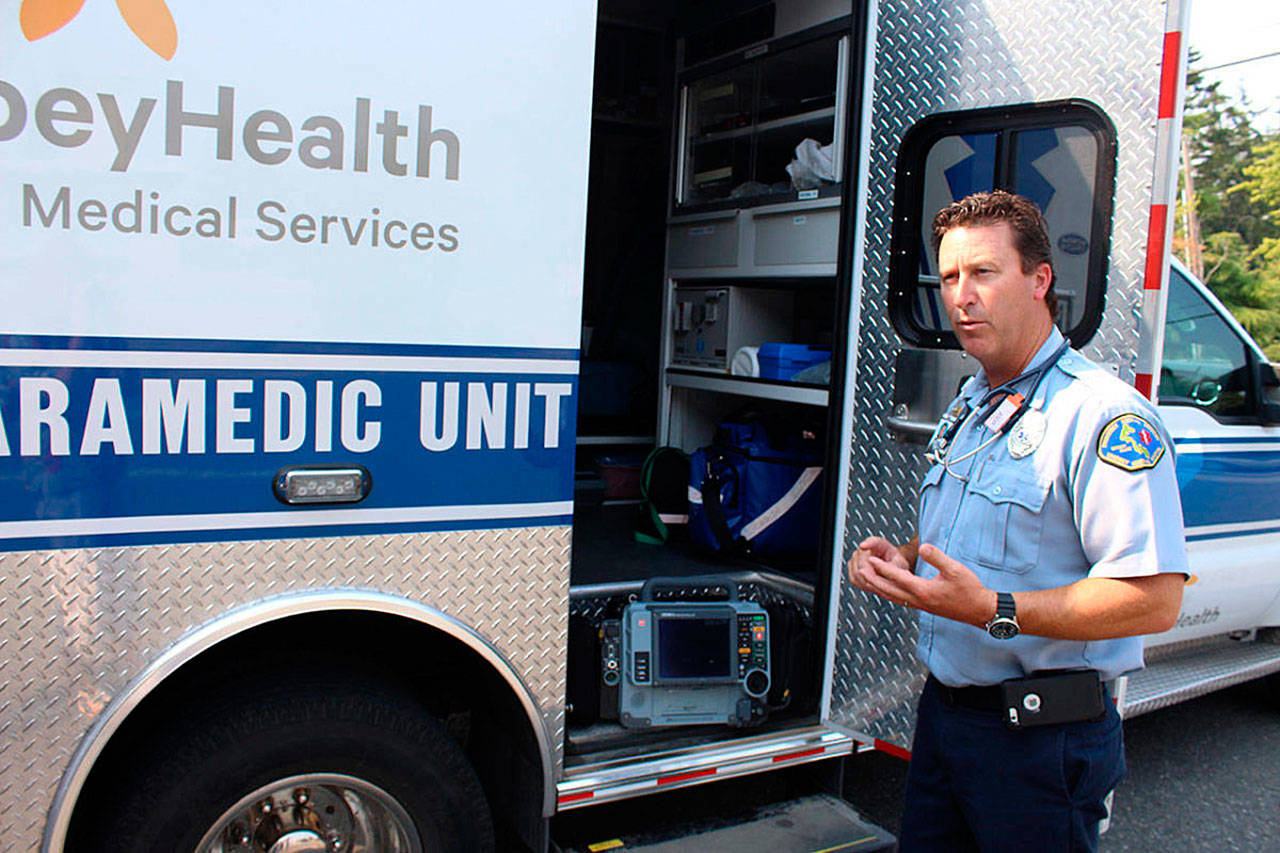Voters will again be asked to approve a tax levy that funds more than half the budget of WhidbeyHealth ambulance services, which is experiencing more and more 911 calls.
The measure is part of the Aug. 7 ballot.
Whidbey Island property owners who pay Island County property taxes would continue to pay 50 cents per $1,000 of their assessed property value to the EMS levy, explained Roger Meyers, emergency medical services manager.
“Since 1978, a levy has provided 60 percent of our operating budget,”Meyers said. “The EMS levy will remain at the same rate.”
The annual operating budget for WhidbeyHealth EMS is $8 million. Last year, it completed about 8,800 runs up and down Whidbey and to surrounding medical centers every year.
Data indicate that the number of 911 calls this year is on track to exceed last year’s call volume, Meyers said. Calls for ambulance assistance have increased by more than 2,000 calls during the past seven years, records indicate. Some of the increase is linked to elderly residents falling and needing assistance for injuries.
Ambulances, paramedics and emergency medical technicians are based at three stations in Coupeville, Oak Harbor and Bayview.
During life-threatening emergencies involving burns or major trauma, or for patients requiring surgical care unavailable locally, EMS responds and communicates from the field with WhidbeyHealth staff.
“This is vital to our hospital system,” Meyers said.
Six advanced life-support ambulances are normally in round-the-clock rotation, but as many as one dozen could respond during disasters or times of high-call volume.
EMS also provides local fire departments additional ambulances equipped with basic life support, and it allocates funds to offset costs of responding to medical calls.
“The joint venture between WhidbeyHealth and the fire districts enables us to have additional resources for our increasing call volume,” Meyers said.
Levy funds are used for all aspects of operating the ambulance system, including labor costs, maintenance, education, training and equipment. The WhidbeyHealth EMS department employs about 50 men and women, including paramedics, EMTs, office staff and management.
Buying and outfitting an ambulance is costly. Buying a rig from a reputable supplier costs about $165,000, and totals more than $230,000 once it’s outfitted. Meyers said replacement is considered once an ambulance reaches 150,000 miles.
The ambulance system also joins with other organizations to address prevention and causes of illnesses and injuries. Examples include educating seniors on how to making their homes fall-safe, distracted driving prevention and sudden cardiac arrest awareness and response.
“This levy is not just 911 response, but it’s also all the other ways we care for and collaborate with our fellow Whidbey Islanders,” said paramedic Robert May.
People age 65 years and older who fall down and call 911 comprise a significant amount of the call volume, Meyers said.
“In response to these preventable incidents we have partnered with senior centers, libraries, churches and civic organizations to educate Whidbey Islanders about the four major causes of falls and what we can do to prevent them,” he said. “Exercise is the No. 1 strategy to decrease your falls risk.”



